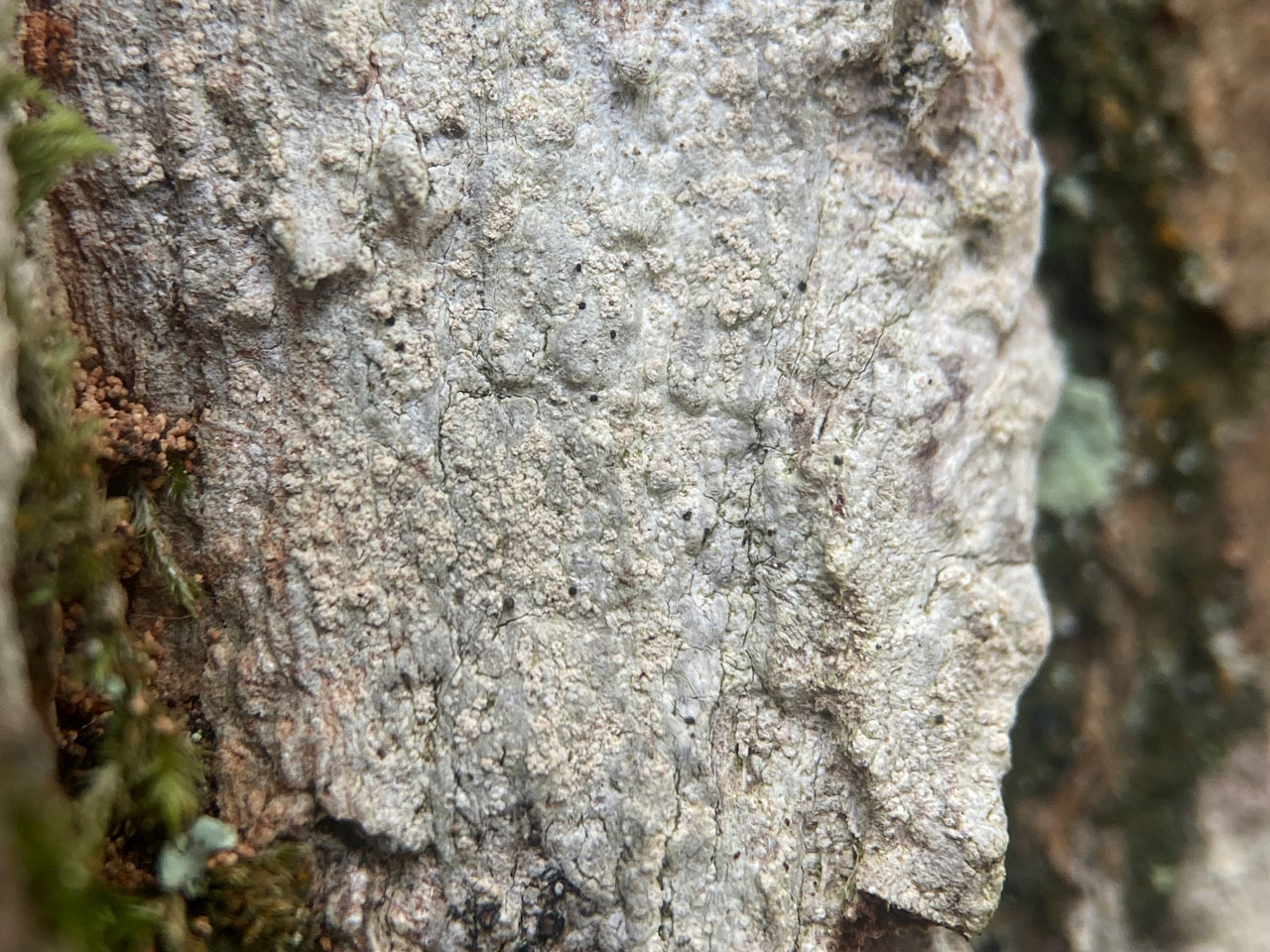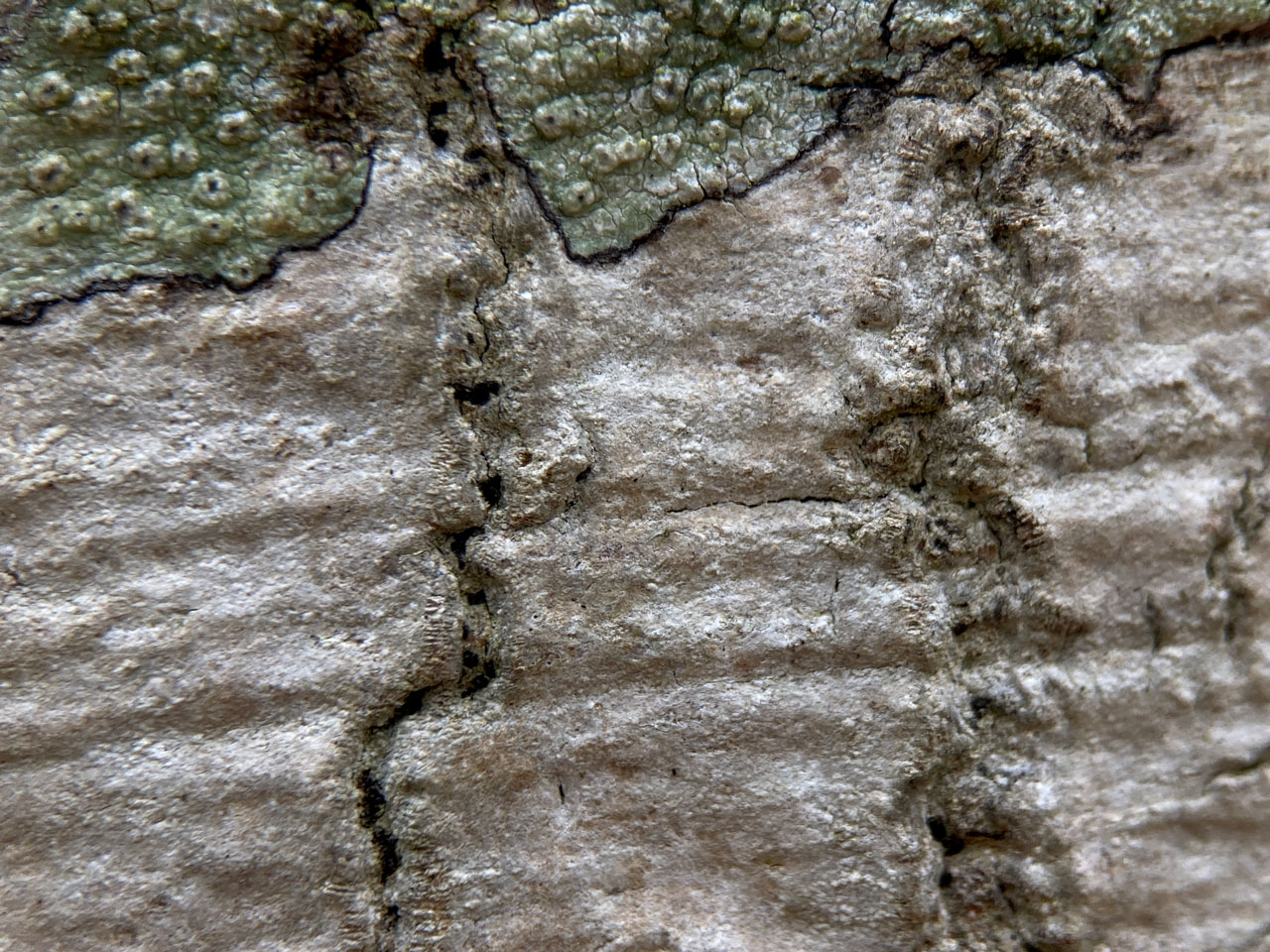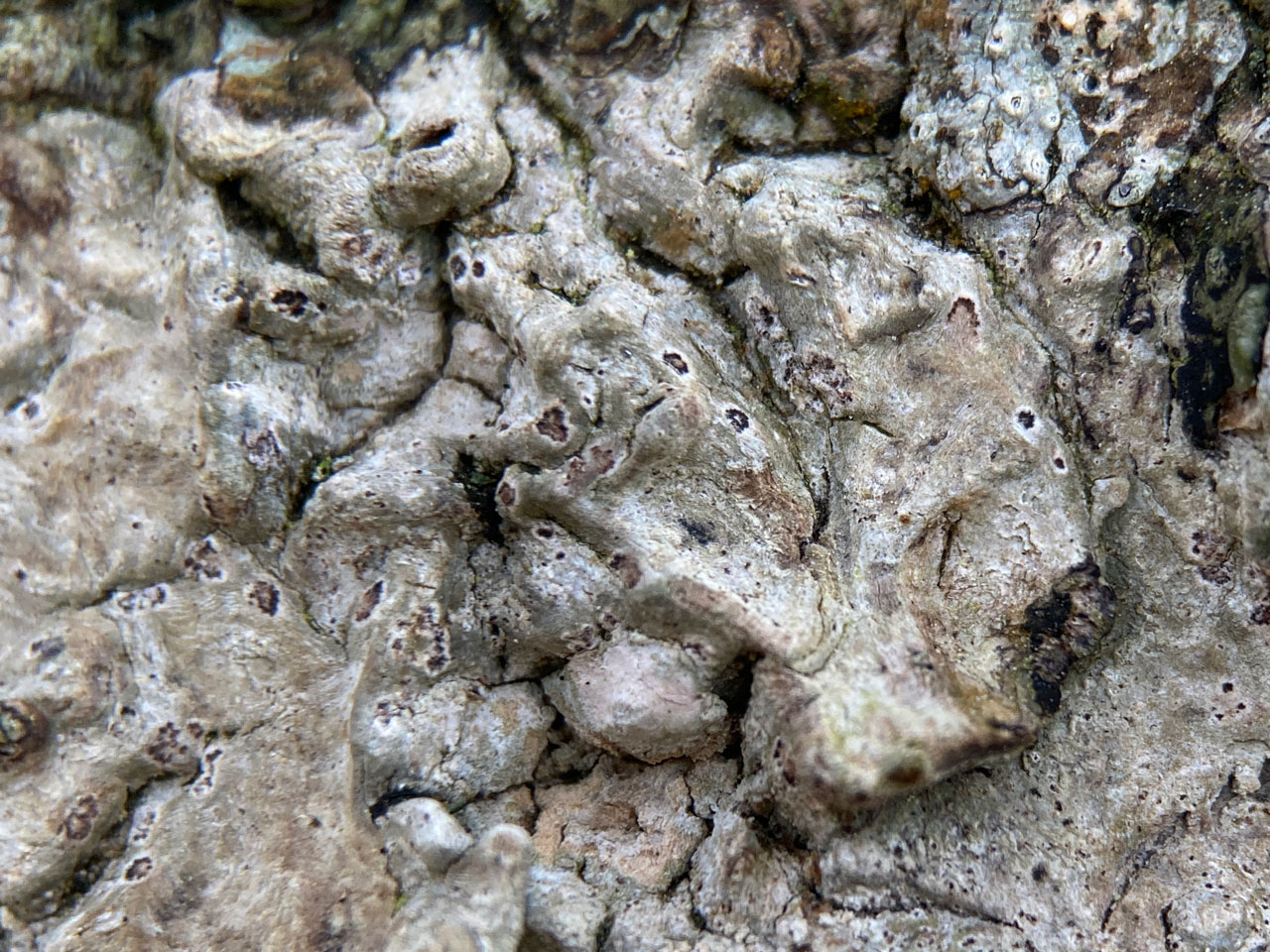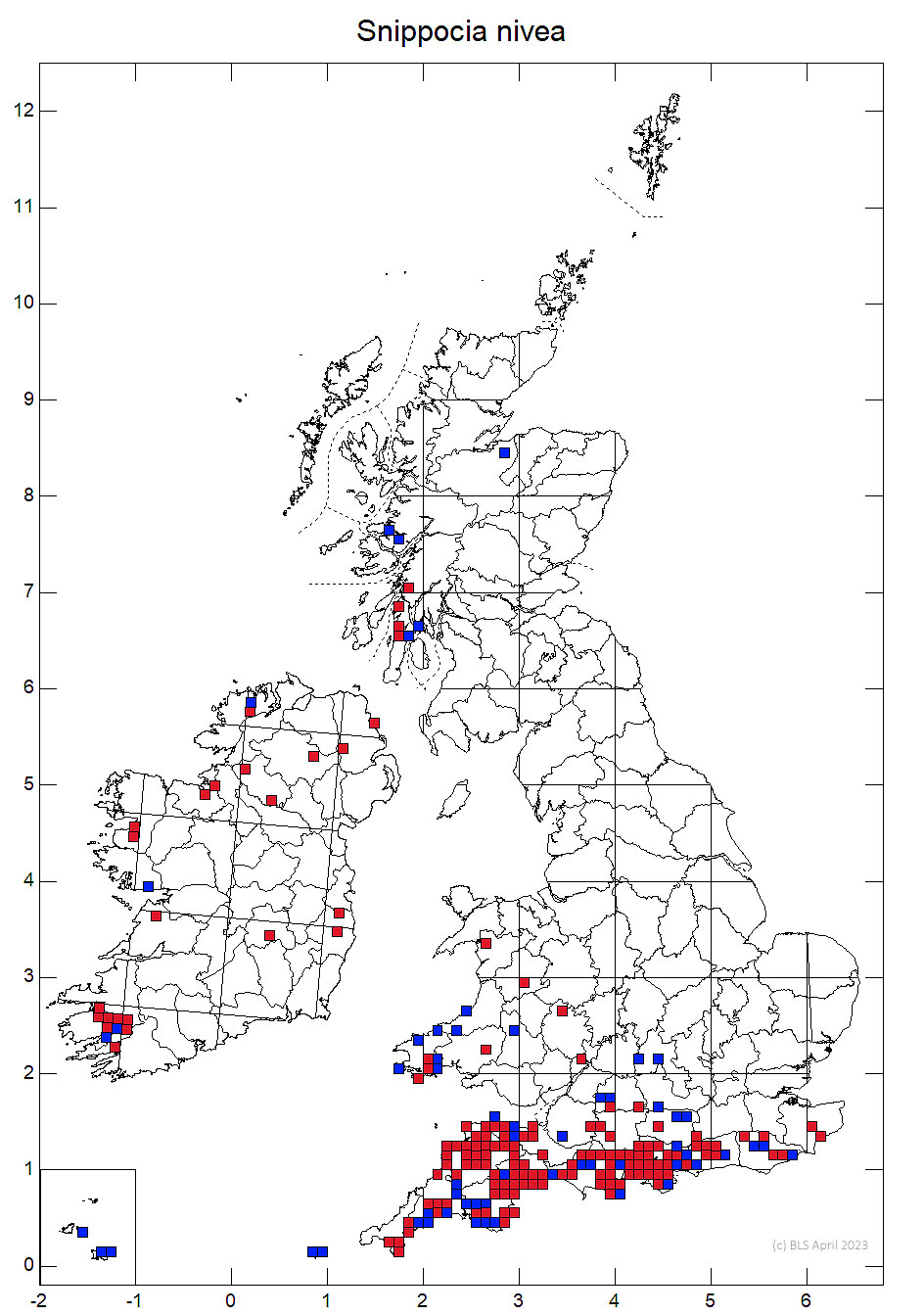Snippocia nivea is a southern woodland lichen, which can dominate on drier acidic bark and become very abundant in undisturbed woods, but becomes a rather rare old growth dependant species to the north. Distinctive in the pinkish colouration, the irregular soralia derived from small tubercules and the Pd+ yellow spot test.
Thallus usually rather thick and sometimes ± tartareous, rarely thin and evanescent, wide-spreading, pale grey-pink when fresh, soon becoming creamy white to glaucous green-grey in dried collections, cortex absent or poorly developed. Photobiont trentepohlioid, cells single or in short chains, individual cells 12–27 × 10–15 μm, ± spherical or short-elongate. Surface matt or rarely slightly shining, continuous, rarely weakly rimose-cracked, sometimes entirely non-sorediate, especially on Ilex, but usually with soralia developing from small tubercules, at first punctiform, to 1 mm diam but then spreading and becoming confluent to form irregular patches, rarely covering more than half the thallus, more definately pink than the thallus. Prothallus often not obvious, when present white to dull purple-black in colour, smooth or obscurely fibrous. Apothecia unknown. Pycnidia occasional, black, immersed, mainly circular and ca 125 μm diam., some elongated and lobed to 250 μm and exceptionally to 500 μm long, conidia 5.7 – 6.7 × ca 1 μm, straight to curved, the pycnidia often apparently empty. Thallus C–, K–, KC–, Pd+ bright yellow, UV± dull pale grey ± tinged orange (psoromic and 2-O-demethylpsoromic acids and ± an unidentified xanthone).
Haematomma ochroleucum var. porphyrium is separated by its distinct white and fibrous prothallus, greenish glaucous colour, presence of Trebouxia and the Pd– thallus. Schizotrema quercicola has a Pd+ orange-red reaction confined to the persistently punctiform soralia. Sporodophoron cretaceum is Pd– and starkly white.
On bark on the dry sides of ancient trees, but also on moister acid bark where frequent, often forming extensive pale pink patches, especially on Oak, Beech and Holly in old woodlands. A quite mobile woodland species in the south (Sanderson, 2010), readily colonising 19th century Oak plantations but increasingly old growth depenant to the north.

Frequent in southern England, rare beyond, Wales, W. Scotland, scattered and rare in Ireland, Channel Islands.
A typical component of the Ancient Dry Bark Community (Lecanactidetum premneae) for which Britain has an international responsibility, but also frequent in other communities. Snippocia nivea is frequent from west Sussex to Cornwall, but becomes rather rare to the north. Rare and mainly found on old Hollies in ancient woodland in Ireland.
Britain: Notable & International Responsibility species
Scotland: Priority Taxon for Biodiversity in Scotland
Wales: Vulnerable
Cannon, P., Ertz, D., Frisch, A., Aptroot, A., Chambers, S., Coppins, B. J., Sanderson, N. A., Simkin, J. & Wolseley, P. (2020) Revisions of British and Irish Lichens Volume 1 August 2020 Arthoniales: Arthoniaceae. BLS
Sanderson, N. A. (2010) Chapter 9 Lichens. In: Biodiversity in the New Forest (ed. A. C. Newton) 84-111. Newbury, Berkshire; Pisces Publications
Text by Neil A Sanderson, based on Cannon et al (2020)



